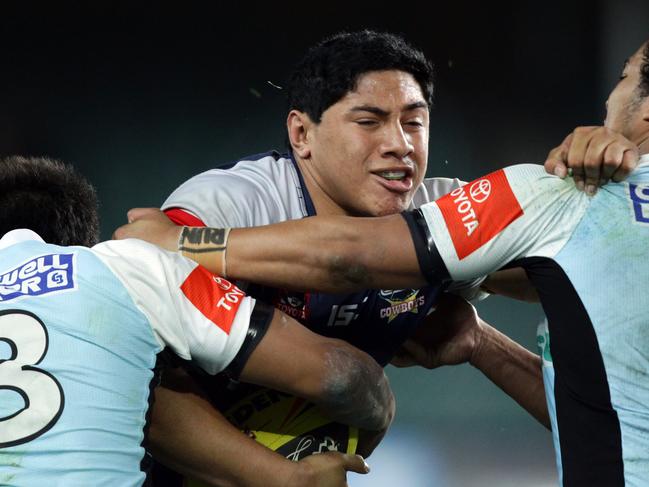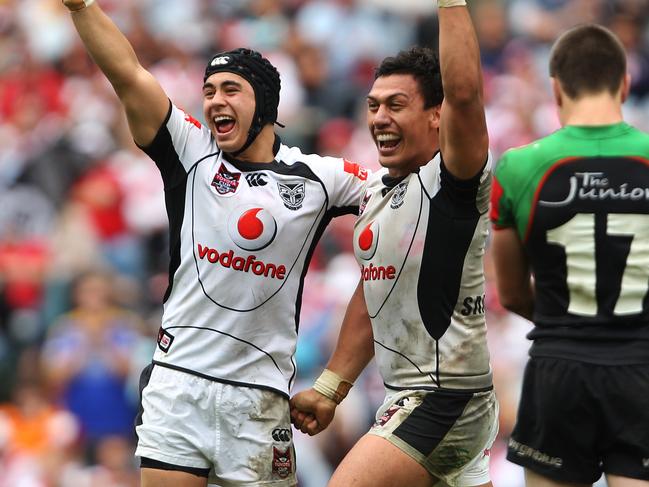NYC deep dive: The winners and losers of rugby league’s under-20s
The now-defunct under-20s competition, which ran between 2008-2017, produced attacking superstars like Tom Trbojevic and Shaun Johnson. But how did the forwards fare making the leap to the NRL? Our statistical deep-dive breaks down the numbers.

NRL
Don't miss out on the headlines from NRL. Followed categories will be added to My News.
They came, they saw, they conquered.
The now-defunct National Youth Competition, which ran between 2008-2017, produced some of the best players of the modern era.
The question begs whether these players would’ve had the same careers regardless of where they started – but the televised games certainly put their names in headlights early.
Recently retired prop Aaron Woods, who played in the NYC between 2008-11, said on Triple M the opportunity to live the life of an NRL player at a young age was invaluable, despite the fact the grind was almost non-existent.

“I played two or three years of the NYC, young blokes used to love it,” Woods said.
“There were games each week which were TV games and we used to gee it up. All the boys would get haircuts.
“Honestly, it was good for the exposure for the young blokes. There’s a lot of pros and cons to it, a lot of the old footy heads were like, ‘These players are probably getting too big for their shoes’.
“They don’t learn the real grind of footy, more just the attacking flair.
“You’s see games end 40-30. It was good to watch, but the traditionalists of rugby league, you learn the arm-wrestle, the grind.
“There are a lot more sides coming into the competition the next few seasons, so it’d be good to see which kids can handle that expectation.”
There were 648 players to play first grade from the 3045 that turned out in the NYC, a strike-rate of 21% – on par with the percentage who graduate from junior competitions today.
Interestingly, first grade talent from the group of 648 was almost immediately identified, with most players going straight from under-20s to NRL.

South Sydney half Cody Walker is one of the rare players who had a long run until he was considered ready for first grade. He debuted in the Titans’ NYC side in 2009 and didn’t make his first grade debut until 2016.
The biggest statistical anomaly of the players who went straight into NRL from the NYC is despite an expectation that attack is the only thing that mattered, the majority of players in the early years to debut were actually forwards.
Some of the best in the game – like Jared Waerea-Hargreaves, Josh Papalii, Wade Graham, Jason Taumalolo and Ben Matulino – had no issues going from playing against boys to men.

Six of the 10 grand finals played from 2008-2017 were decided by four points or less, with the Warriors a standout team that produced the likes of Shaun Johnson, Konrad Hurrell and Ben Henry.
An analysis of the years between players debuts also shows the success of players being able to leap between grades without playing reserve grade in-between diminished as the competition went on.
The years 2008, 2009 and 2010 were red-hot with talent, but fewer players came through the system in the years following.
When the comp was scrapped in 2017, concerns over player welfare and talent drain were paramount.
Skyrocketing rookie salaries was also at the forefront of the debate.

“The fact is we take young men in our game away from their homes too early, we put them into intensive competitions, we ask too much of them and quite frankly we’ve had some disastrous outcomes,” former ARLC chair John Grant said at the time.
“That’s all about giving them expectations beyond what is reasonable at the time and frankly paying them too much money will do that.”
If the competition is to be revived, Broncos CEO Dave Donaghy said it needs to be looked at holistically.
“Often we bring in a new competition or a new idea without a thorough thought for what the unintended consequences may be,” he said.
“It’s great that the committee is approaching it in that manner, but I think it’s really important as a Queensland-based club that there needs to be parity with our competitors.
“The previous NYC was too expensive to run and for me it was too long, so it was a lot to ask young men to be copying the exact program of the NRL.
“There were also a range of welfare issues, so if we’re serious about bringing it back, let’s give it thought based on the challenges that we’ve experienced in the past.”



